Diabetes Testimonials in Kentucky
empty
empty
"Bringing Family Together” from Jeri McCullough
 Story: My personal journey to a healthier lifestyle all began six years ago when I was diagnosed with Type 2 Diabetes in 2009 by my physician. At that point, I was prescribed Metformin once a day. I didn’t feel any sense of urgency to change my lifestyle considering my mom had Type 2 Diabetes and I suspected it was primarily age-related – “I just had to deal with it.” I accepted it as just another daily challenge. I was overweight, didn’t exercise and was consumed with non-controlled, unhealthy eating habits. My belief that my Metformin would take care of my diabetes and justified my lack of motivation to change my lifestyle. After all, I had no troubling symptoms that alarmed me to worry so I said to myself, “Why should my life change?”
Story: My personal journey to a healthier lifestyle all began six years ago when I was diagnosed with Type 2 Diabetes in 2009 by my physician. At that point, I was prescribed Metformin once a day. I didn’t feel any sense of urgency to change my lifestyle considering my mom had Type 2 Diabetes and I suspected it was primarily age-related – “I just had to deal with it.” I accepted it as just another daily challenge. I was overweight, didn’t exercise and was consumed with non-controlled, unhealthy eating habits. My belief that my Metformin would take care of my diabetes and justified my lack of motivation to change my lifestyle. After all, I had no troubling symptoms that alarmed me to worry so I said to myself, “Why should my life change?”
On December 1, 2014, life, health, and the reality of both, LITERALLY, hit me right between the eyes. My eye sight was altered, I was exhausted, I was not sleeping, I had dry mouth and an overall feeling that something was not right. I then went to see my doctor and found out that my A1C was 13.4 (goal 7) and my average daily blood sugar was at 366 (goal 120). My other blood tests results remained consistent with previous monitoring and did not change. In addition to Metformin, I continued to receive blood pressure and cholesterol medication. At that visit, I engaged in a very serious conversation about the future of my health with my doctor. He referred me to an eye doctor which turned into a weekly visit for the next month. I also had my Metformin dose increased to four times a day, had doctor visits every two weeks for the first month and then once a month visits for four months. I decided, enough was enough, I would take complete control and would not let diabetes take my life away from my family and the effect it had on my family’s life. My husband was overweight, my mom had Type 2 Diabetes and was overweight, my daughter was overweight by 100 pounds and suffering from Hashimoto’s Disease (Thyroid disease), and her husband was a Type 2 Diabetic and was overweight as well. We all had high blood pressure and high cholesterol and were on the road toward medical disaster. We had a one year old that needed us and I wanted to be a part of her life.
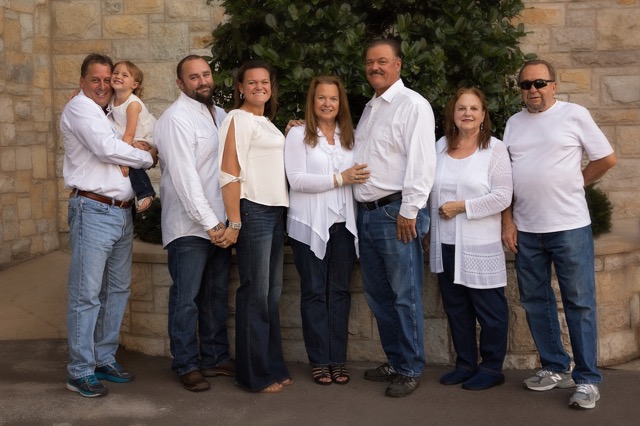
During the next four months, I attended the Diabetes Self-Management Education 6 week class with my mom. I completely changed our family diet, we began to exercise, and my daughter and I joined a ‘clean eating’ program through AdvoCare that focused on healthy lifestyle management which we all still participate in to this day. We all took charge as a family together, working as a caring family to overcome our health issues. By June, I had lost 50 pounds; my husband had lost 40 pounds; my daughter lost 109 pounds and her husband also lost 45 pounds – you can see in the pictures. I am happy to say my A1C was at 5.9 and I’m OFF metformin and cholesterol meds – YEAAAAAH! My future goal is to be taken off of my blood pressure medication by continuing to focus on a healthy lifestyle with my family.

The reason for my story is to tell all families like mine that you CAN TAKE CONTROL and make a difference not only in your life but the lives of ones you love most. My family and I have been blessed and appreciate every healthy day moving forward. My final message is “MAKE YOUR CHOICE,” I did and our family did. Each day, you CHOOSE to move closer to your ultimate goal or further away from your goal. There is no neutral. No in between…its either forward progress or backwards progress. Diabetes is a disease that YOU have a choice to make a difference and change your life as my family did. It wasn’t easy, but my family chose a healthy future and yours can too. Oh! Little ones do follow your path – check out the photo below.
My name is Cheryl Montgomery, and I want to begin when I was diagnosed with diabetes back in July of 2004. In August 2004 I took some diabetic classes DSME at St. Joseph Diabetic center for 4 weeks and finished the course. All of the information they gave me was a great help in controlling this horrible disease. Unfortunately, I ignored the wonderful instructions by the diabetic nutritionist and lived and ate how I wanted.
I was 204lbs in May 2015 when I went to my Dr. for a 3 month A1C check. My blood work came back horrible – A1C was 8.7 and cholesterol was 387. I was feeling very bad at the time and did not realize it – until later in July that same year when I had chest pains while sitting at my desk that morning. The nurse took my blood pressure and it was 194/104! She immediately took me over to the hospital across from Dr. Rasheed’s office where I worked as a registrar. The cardiologist asked me my past family history, which was not good, Dad died at 58 with Myocardial Infarction he had diabetes, Mom died at 65 with 7 heart attacks, and my brother had 4 bypass open heart surgery on his 40thbirthday. I knew it was my turn.
The Dr. found a 80% blockage in the back of my heart and put in a drug alluding stent. Since then I realized that I may not see my grandchildren if I kept up my bad eating habits. So I got on the treadmill and walked and remembering what the nutritionist told me back 11 years earlier I began to eat healthier. My A1C went to 5.6 in September (just two months after the heart catherization) and my cholesterol went to 107. By December my AIC was 5.2 I think my cholesterol was 123.
The pounds started melting off and I have lost a total of 60 lbs. My goal is to lose 70 and maintain.
I am at a plateau right now, but I wanted to let others know that they can get the weight off and get off all that medication – I went from having shots and 4 different pills – now I am down to 1 metformin at night. It isn’t easy – but it can be done! I still walk in the mornings, I try to walk during my lunch and after work I go to a local fitness gym when I can.
I’ve inspired several people at work – the Dr. I work for is amazed – the nurses could not believe the change, my other boss was amazed! They are all starting to work out and watch their intake of calories/carbs. One lady has lost 54 lbs in the last 6 months. Also my greatest recent inspiration was my daughter, who is 32 and is 220 lbs. She has lost 15 lbs and comes out to walk with me when she can – that is worth it all.
Cheryl
In loving memory of those family members who fought diabetes bravely
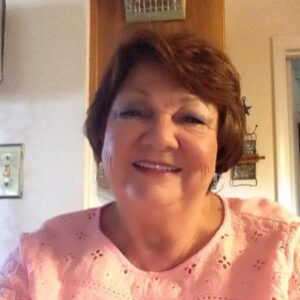 My Name is Diana Davis I live in Nancy Kentucky and I am retired from the Pulaski County Board of Education.
My Name is Diana Davis I live in Nancy Kentucky and I am retired from the Pulaski County Board of Education.
I was diagnosed with diabetes around twelve years ago. As time went on my A1C elevated , not realizing I needed to watch what I was eating, thinking the medicine would take care of it.
In June 2016, my daughter, who works for Lake Cumberland District Health Department told me about a diabetes management class (DSME) they were having at the Health Department. With my age and other things working against me, I realized it was time to know more about diabetes and take control.
The class was very informative and I learned all the guidelines on how to keep your diabetes on track and especially the way I need to eat, and by watching my carbohydrates intake.
I would tell anyone who needs this class to “Go for it”. It is well worth your time to attend.
 My name is DeAnn Cross, I was diagnosed with Type 2 Diabetes in July 2016. I wanted to learn more about diabetes and how to manage it so I took the Diabetes Self Management classes to get control of my diabetes.
My name is DeAnn Cross, I was diagnosed with Type 2 Diabetes in July 2016. I wanted to learn more about diabetes and how to manage it so I took the Diabetes Self Management classes to get control of my diabetes.
I learned about the program where I work for the Health Dept and my mom, who is also a diabetic went and encouraged me to go to these classes.
I learned a lot from the program, the most important thing was how to count your carbs and how much carbs I am allowed to eat each day to maintain my glucose levels. I also learned that I can eat whatever I want I just have to learn to substitute carbs in a meal to have that piece a cake every once in awhile.
The program changed by life tremendously, I have lost 12 lbs in 3 months by counting my carbs daily and keeping a food dairy. My A1C went from 7.2 to 6.3 within that 3 months and my doctor was very pleased with my results.
If you have been diagnose with diabetes, you need to take a Diabetes Self Management Class to understand what diabetes is and what it can do to your body and how important it is to manage your diabetes.
When I was diagnosed with diabetes I got depressed but going to these classes made me realized it isn’t the end of the world just because you have this chronic illness. You need to eat the right amount of foods, exercise and manage your diabetes because once you body start showing symptoms of problems from diabetes, it is too late to change, and that is why it is very important to take care of yourself from the beginning to live a long, healthy life.
My Diabetes Story ------ From a Diabetes Prevention Program Participant

This couldn’t be happening—was I getting the same disease that took my mother’s life? I had just come home from a meeting with a diabetes educator. I had a headache and all I wanted to do was get in bed and pull the covers over my head. I had received phone calls from the nurses at Anthem Blue Cross/Blue Shield, asking me if I knew I was in danger of becoming diabetic. I had also gotten a postcard in the mail, informing me that my health insurance would cover the cost of the Diabetes Prevention Program classes.
Memories of my mom, a type 1 diabetic, came flooding back—her daily insulin shots, strict diet and daily walks after supper. She managed her disease well but the medical knowledge of the day was not enough—she died at age 51 in 1982 from diabetic complications. Next I had a flood of overwhelming emotions including fear, anger, frustration, grief and tears. I prayed on my knees for several weeks, I fought the reality of being told I was prediabetic. Finally I came to the point of surrender to the diabetic lifestyle and acceptance that I would have to live like my mother for the rest of my life. For now, I didn’t have to take insulin injections or oral medications.
My next thoughts were, “what did mom do to control her diabetes”, so I started doing what she did—she didn’t eat sugar at all and limited bread, potatoes and other carbohydrates. She ate lots of vegetables as well. She also took a daily walk after supper, and I walked with her. I remember her telling me I needed to eat like she ate. However, I wanted to eat like my dad and brother. Not realizing what I was putting in my mouth and not realizing that females cannot consume as many calories as males, I ate like my dad and brother and eventually became a binge eater.
Now that I had accepted the inevitable diet and exercise before me, I searched the Internet for classes in my city. I found out that these classes were taught at the YMCA, so I signed up and waited for the next 16 week session to start. I attended my first class in January 2016 and I have just finished the weekly sessions. While waiting for the classes to start, I contacted the American Diabetes Association (ADA). They cheerfully sent me a packet of information, including a food plan, information about exercise, testing my blood sugar, working with my doctor and what medical tests I needed to protect my health with my new diagnosis of prediabetes. I also called the national office several times and had online chats with an ADA representative. The first few months were very difficult since I was detoxing from sugar. I didn’t know what was happening to my body, but one day, an ADA representative asked if I was craving sugar. A few days later, I called back to ask him how he knew about the sugar cravings. He said, “I don’t do this alone”. Although the new guidelines for the diabetic diet state that there are no more forbidden foods, I choose not to eat sugar because it might start cravings and binges again. I also feel much better without sugar.
Somehow I got through the holidays without eating sugar or overindulging in carbohydrates. I was walking daily as well. I started walking about 30 minutes/day, but I have now worked up to one hour of walking/day. When the Diabetes Prevention Program (DPP) classes started, I was taught how to fine-tune my daily diet and exercise program. Among the items I learned were:
**No food is off limits, but I did have to use portion control. **Exercise lowers blood glucose.**Add strength training to my daily walks. **Drinking lots of water will lower blood glucose.**Eat at least 2 cups of vegetables/day, and add some fruit to my diet.**Limit portion sizes of carbohydrates. **Limit fat grams daily. **Limit portion size of nuts due to high salt and fat content. Although nuts contain healthy fat, they are also high in calories, which will add pounds on the scales.**Accept that this is a lifestyle change that will have to be maintained for the rest of my life.
As the weeks went by, I saw the pounds drop away. Now folks were watching me—they complimented my weight loss and I came out of my shy self a bit more. New challenges were saying no to too much food at work and church potlucks. I wanted to eat what everyone else was eating. I learned to choose healthy foods, sit down and eat one plate and enjoy the conversation and the company along with eating. One day someone told me they watched what I put on my plate, so now I had to be more careful. Then came the day when my clothes were too big for me and I had the happy chore of buying new jeans. I gave away my bigger jeans. My lifestyle coach was friendly and helpful but firm—she wanted to see me succeed. She was tough on me at times. I didn’t know if I was doing well or not. On the last day of class, she told me I was the most motivated student she had taught. We took pictures to show off my weight loss.
I lost 27.4 lbs in the class session. The class lasts 16 weeks, but we had to cancel twice, so it turned out to be 18 weeks. I have lost 55 lbs since August 2015. I saw my endocrinologist on Friday, May 13. My A1C was 5.5, down from 5.7 in August 2015. This is the three month average of blood glucose. My blood glucose is now in the normal range, but I can’t afford to go back to my old ways of eating. I will always be a high-risk patient because of my family history of diabetes, age and high blood pressure. Now our class will meet once a month. Can I keep this up for the rest of the year? How long can I stay on track? If I fall off the course, I will do my best to get back on the right track. After all—my life depends on it.
I BELIEVE ANYONE CAN DO IT! I DID!

My name is Charles Wydener. I have had diabetes for a long time. My mother died of complications from diabetes at about my age and I don’t want that to happen to me. However, I just could not get motivated to take care of myself. I needed a jump start and I got just that! In January, 2015, I went to the doctor because I needed my CDL renewed. My doctor refused to renew my CDL because my blood sugar was out of control. My A1C was 14. It was nothing for my blood sugar to be over 500 mg/dl. Her refusing to renew my CDL was probably the best thing that ever happened to me. The doctor recommended I meet with a Diabetes Educator who signed me up to a Diabetes Self-Management Education Class. I made the appointment and we started working on my diet and my insulin regimen. She taught me how to adjust my insulin based on what I ate. She taught me how to correct my blood sugar when it was high. I knew I should be checking my blood sugar but just had not been doing it.
It started to make sense to check my blood sugars now that I knew how to fix it. There are times when my blood sugar hikes up to 200, but for the most part, it stays in the 150 range or lower. It is nothing unusual for me to have a 95 or 100 reading. ‘I believe anyone can do it. You just have to watch what you eat and check your blood sugar’. It has helped me to keep a notebook of what I am eating, how many grams of carbohydrate, and what my blood sugar is. This has helped me to figure out what I could eat and how much I could eat without raising my blood sugar. I have a pretty good handle on things and it really has not been that hard at all. My A1C has dropped to 7%. The other advantage is that I started losing weight. I have lost over 30 pounds. My cardiologist says I’m healthier now than I have been in years. All this is just a byproduct of eating right and trying to live right. I’m finally living well with diabetes. See my picture below.
Jesse --A Face of Diabetes.
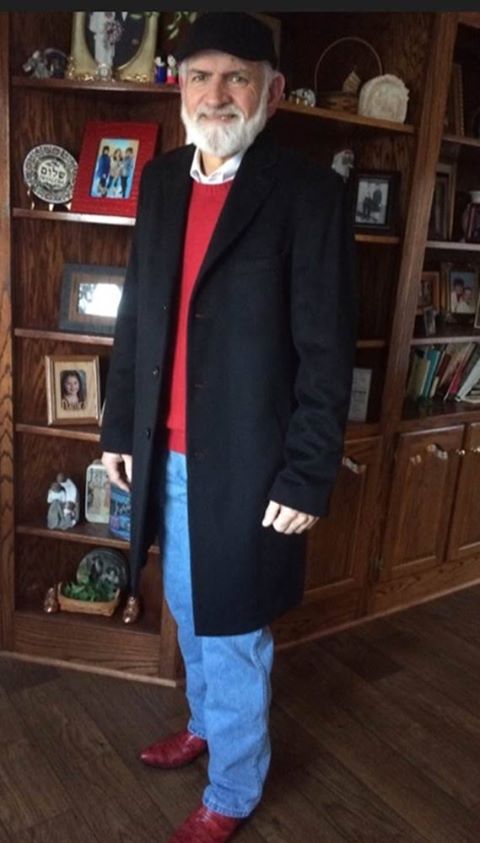 Jesse had NEVER had his glucose checked –in fact he hadn’t even had a physical since going into the Army in 1971. In October 2015, he had his bloodwork done at the Russell County Health Fair. When the bloodwork came back, his glucose was 265…he and his family were shocked –they had absolutely no clue that he had diabetes. He went to his doctor and was started on medication immediately, including insulin.
Jesse had NEVER had his glucose checked –in fact he hadn’t even had a physical since going into the Army in 1971. In October 2015, he had his bloodwork done at the Russell County Health Fair. When the bloodwork came back, his glucose was 265…he and his family were shocked –they had absolutely no clue that he had diabetes. He went to his doctor and was started on medication immediately, including insulin.
Jesse was determined to get his diabetes under control. He with the help of his wife, Anita, began eating healthier and began making lifestyle changes, such as walking daily. He attended and “graduated” from the diabetes classes at the Russell County Health Department taught by Destiny Greer, RN, CDE.
Today, Jesse is 50 pounds lighter, walks over 6 miles a day, and is completely off insulin! The positive results in his lifestyle changes are evident in his smile!
ADULT and YOUTH AMBASSADOR SPOTLIGHTS: Dani Klein
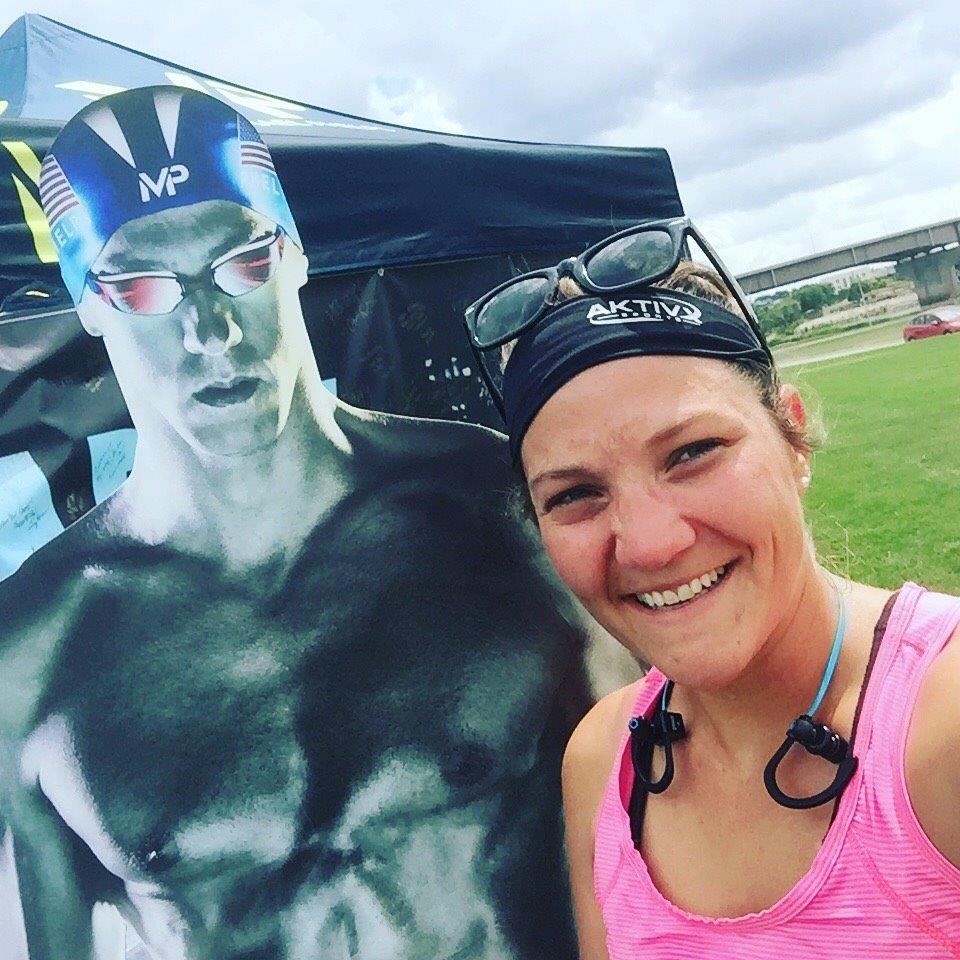
My name is Dani Klein, I live in Jefferson Country and have had diabetes for 16 years. I am diagnosed with Type 1. ** I am a rare story and was actually originally diagnosed with type 2 and placed on Avandia from 7/14/00-9/2/00 when I was admitted to the hospital and re-diagnosed as type 1 and started on insulin.
Dealing with diabetes has been interesting for my family and I. I can’t speak for my mother but I know when I was younger she was constantly worried about me when I would travel without her. As for me, I won’t lie it sucks. It really sucks knowing that I can’t just eat whatever I want without having to take insulin or if I take too much. I have gotten a lot better with it over the years and accepted that I have a best friend for life. Of recent, the hardest and most difficult thing to deal with is the amount it affects my ability to be healthy and have an active lifestyle. I have had to make a lot of adjustments with my workouts whether lifting or running, but it has been worth it all. Being active I notice that my diabetes has leveled out quite a bit, but has also helped me make myself more accountable for my life and my life with diabetes. It is not an easy thing to live with and I consider myself pretty normal with the exception of this. I think I have lived with it long enough that I don’t know anything else so I am always surprised when I meet people and they are like ” you poor thing your life has to be hard with diabetes.” Yes, it is, but it is manageable and not near as bad as other diseases. Also, I don’t let diabetes control me I control it.
My doctor and the accessibility to him was a huge perk growing up. Having been on my own the last 4 years, the access to diabetes educators has tremendously helped me. But the BIGGEST change and greatest resource has come through have the DexCom. I love it because I can see constantly what my glucose is and it helps tremendously with my workouts. It is also somewhat of a relief for my mother who lives 4 states away that she can open an app and see what my blood sugars are or she gets alerted if it is too low and can contact me to make sure I am okay. That has been the biggest and best change of recent.
I currently work for UofL and they offer diabetes education through their GetHealthyNow program. Being able to meet with a diabetes educator every 3 months or so and just kind of review what my life has been like for those 3 months and make adjustments has really helped. I have recently got connected with JDRF of Louisville in joining up with the Team JDRF for runs. I have also signed up to help be a mentor to younger kids who are recently diagnosed. I didn’t have access to these things or wasn’t really reached out to with these offers, so I am super excited to now be getting involved with it.
Rachel Hopkins
 The story of my diagnosis is one that I’ve heard a thousand different times. My mother, who clothed me in only cloth diapers, had begun to notice that my diapers were becoming increasingly heavy and on October 29, 1997 her concerns were verified after a trip to pediatrician diagnosed her 14 month old daughter with type 1 diabetes. I was hospitalized for three days and then released on my father’s birthday; to this day he claims it was the best birthday gift he has ever received.
The story of my diagnosis is one that I’ve heard a thousand different times. My mother, who clothed me in only cloth diapers, had begun to notice that my diapers were becoming increasingly heavy and on October 29, 1997 her concerns were verified after a trip to pediatrician diagnosed her 14 month old daughter with type 1 diabetes. I was hospitalized for three days and then released on my father’s birthday; to this day he claims it was the best birthday gift he has ever received.
I am currently 18 years old and I have walked with diabetes in all stages of my life. We all know that growing up and finding oneself as a teenager in today’s world is hard, but I am a living testimony to the fact that growing up with diabetes is a whole different game all together. Growing up it was difficult for me to understand why I was different from my friends, why I wasn’t allowed to go to sleepovers, why I was the only person in my family who had to take injections and check their blood sugar. I always knew that I had diabetes, but the concept that it was a disease that was unique to me, that it wasn’t shared by everyone was something that took me many years to grasp.
Due to my disease I was exposed to countless experiences that most young girls no doubt would have found traumatic from having my insulin pump stolen on the playground because older students thought it was an mp3 player, to accidentally vomiting on my boyfriend’s couch after high blood sugars had wreaked havoc on my system several days in a row. I learned how to succeed in school, on the soccer field, and on the cross country course through a process of trial and error. There is no secret to overcoming diabetes, there is only learning how to fight through the highs and lows. There is only the realization that the disease is not going to go away and that you ha
My Name if Sadie Miller - here is my Ambassador story!
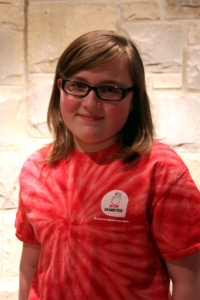 It’s not too late to join the American Diabetes Association for Step Out 2015 on May 30th at Keeneland Race Course. One of our Step Out Youth Ambassadors, Sadie Miller, shares her story in hopes that you will Step Out and Stop Diabetes. Register or make a donation today at diabetes.org/lexingtonstepout!Sadie Miller – ADA Ambassador “My family will never forget the date of January 28, 2013. It was the day that I, Sadie Miller, was diagnosed with Type 1 Diabetes. In the couple of weeks prior, I had been complaining of stomach aches and had even gotten sick a few times. My mom and dad had decided that I must have a stomach virus and just having trouble getting over because one day I would be sick and the next I was fine. It wasn’t until a very scary episode did we really think that it was something more serious. It was a Saturday and I had not eaten all day but we were going to a birthday party so I thought I would feel better by then. While at the birthday party I was fine until I drank some punch. It seemed like right away I started feeling sick. I wouldn’t leave the trash can because I thought I was going to get sick. While on our way home from the party, I got really pale and really tired. I fell asleep in the car at about 4:00 p.m. When we arrived home I got right out of the car and got into bed. I did not wake up until the next day around noon. That was when my mom and dad thought something might be wrong. Since the doctor’s office was not open on Sunday, we waited until Monday morning. When the doctor came in to see me, we told him all of my symptoms. He too thought they were strange. He informed us that first he was going to check my urine. After checking my urine, he came back with a weird look on his face. He said that it did not look good but he wanted to check my blood sugar. The monitor read 368. To me that was a foreign language. We asked the doctor what that meant; he said that my blood sugar should be between 80 and 170. He informed us that he was admitting me to UK Children’s hospital because my urine indicated that I had large Ketones, and my health was in danger. My mom immediately broke into tears. She had heard about Type 1 Diabetes and knew that it was life-long and a very hard disease, especially for young children. He also informed us that I had lost 11 pounds in a very short amount of time. After arriving at UK Children’s Hospital, they started me on an insulin drip and checked my blood sugar every 2 hours. They informed us that my A1C was 11.2 and explained what that meant. Evidently I was much more sick than my parents could have imagined. After a day of treatment, I was starting to feel better. The doctors and nurses were so helpful and informative. They showed us everything we needed to do and didn’t let us leave until they knew that we had it right. It was now time to try this at home and it turned our world upside down! But I really feel like I adjusted quickly. After just a couple of weeks, I was giving my own shots. I check my blood sugar 7-12 times a day by pricking my finger and I used to take at least 4 shots of insulin a day, but now I have an insulin pump. I also wear a continuous glucose monitor that keeps track of my blood sugar and tells me when I am dropping too low or going really high. All of these things to make my life a little easier, can all be traced back to the American Diabetes Association. They raise money every day to aid in the research of diabetes and advancement in treatments. I hope one day there is a cure for type 1 Diabetes. Your Step Out donations go to the ADA and in turn… is helping kids just like me every day! Thank you!”
It’s not too late to join the American Diabetes Association for Step Out 2015 on May 30th at Keeneland Race Course. One of our Step Out Youth Ambassadors, Sadie Miller, shares her story in hopes that you will Step Out and Stop Diabetes. Register or make a donation today at diabetes.org/lexingtonstepout!Sadie Miller – ADA Ambassador “My family will never forget the date of January 28, 2013. It was the day that I, Sadie Miller, was diagnosed with Type 1 Diabetes. In the couple of weeks prior, I had been complaining of stomach aches and had even gotten sick a few times. My mom and dad had decided that I must have a stomach virus and just having trouble getting over because one day I would be sick and the next I was fine. It wasn’t until a very scary episode did we really think that it was something more serious. It was a Saturday and I had not eaten all day but we were going to a birthday party so I thought I would feel better by then. While at the birthday party I was fine until I drank some punch. It seemed like right away I started feeling sick. I wouldn’t leave the trash can because I thought I was going to get sick. While on our way home from the party, I got really pale and really tired. I fell asleep in the car at about 4:00 p.m. When we arrived home I got right out of the car and got into bed. I did not wake up until the next day around noon. That was when my mom and dad thought something might be wrong. Since the doctor’s office was not open on Sunday, we waited until Monday morning. When the doctor came in to see me, we told him all of my symptoms. He too thought they were strange. He informed us that first he was going to check my urine. After checking my urine, he came back with a weird look on his face. He said that it did not look good but he wanted to check my blood sugar. The monitor read 368. To me that was a foreign language. We asked the doctor what that meant; he said that my blood sugar should be between 80 and 170. He informed us that he was admitting me to UK Children’s hospital because my urine indicated that I had large Ketones, and my health was in danger. My mom immediately broke into tears. She had heard about Type 1 Diabetes and knew that it was life-long and a very hard disease, especially for young children. He also informed us that I had lost 11 pounds in a very short amount of time. After arriving at UK Children’s Hospital, they started me on an insulin drip and checked my blood sugar every 2 hours. They informed us that my A1C was 11.2 and explained what that meant. Evidently I was much more sick than my parents could have imagined. After a day of treatment, I was starting to feel better. The doctors and nurses were so helpful and informative. They showed us everything we needed to do and didn’t let us leave until they knew that we had it right. It was now time to try this at home and it turned our world upside down! But I really feel like I adjusted quickly. After just a couple of weeks, I was giving my own shots. I check my blood sugar 7-12 times a day by pricking my finger and I used to take at least 4 shots of insulin a day, but now I have an insulin pump. I also wear a continuous glucose monitor that keeps track of my blood sugar and tells me when I am dropping too low or going really high. All of these things to make my life a little easier, can all be traced back to the American Diabetes Association. They raise money every day to aid in the research of diabetes and advancement in treatments. I hope one day there is a cure for type 1 Diabetes. Your Step Out donations go to the ADA and in turn… is helping kids just like me every day! Thank you!”
My name is Margaret Molloy - Diabetes Ambassador
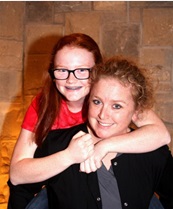 I’m 15 years old and am a freshman at Tates Creek High School where I play soccer and plan to complete the International Baccalaureate program. I also play club soccer for the Lexington Futbol Club. I like hanging out with my friends, traveling, and watching Netflix. I was diagnosed with Type 1 Diabetes when I was 7 years old and in the first grade. It was so scary! I was afraid of taking shots every day and was afraid that I wouldn’t be able to do things with my friends. I remember when they told me I had to take my first shot, I locked myself in the bathroom of my hospital room. My mom and the nurse had to call someone to unlock the door. My first shot wasn’t as bad as I thought it would be. Now I use an insulin pump, which is a lot easier… just a shot every 3 days. I didn’t miss a single day of school when I was diagnosed. School days went on with help from my family, friends, teachers, and school nurse. My mom and dad work hard to make sure I can do whatever I want to do. We travel a lot with my soccer teams and on family vacations. I really want to play soccer in college and I want to go to Italy one day! I love pizza and pasta (I can’t help myself!).
I’m 15 years old and am a freshman at Tates Creek High School where I play soccer and plan to complete the International Baccalaureate program. I also play club soccer for the Lexington Futbol Club. I like hanging out with my friends, traveling, and watching Netflix. I was diagnosed with Type 1 Diabetes when I was 7 years old and in the first grade. It was so scary! I was afraid of taking shots every day and was afraid that I wouldn’t be able to do things with my friends. I remember when they told me I had to take my first shot, I locked myself in the bathroom of my hospital room. My mom and the nurse had to call someone to unlock the door. My first shot wasn’t as bad as I thought it would be. Now I use an insulin pump, which is a lot easier… just a shot every 3 days. I didn’t miss a single day of school when I was diagnosed. School days went on with help from my family, friends, teachers, and school nurse. My mom and dad work hard to make sure I can do whatever I want to do. We travel a lot with my soccer teams and on family vacations. I really want to play soccer in college and I want to go to Italy one day! I love pizza and pasta (I can’t help myself!).
The ADA has been present to help us ever since my diagnosis. Margaret’s Mob has walked in Lexington’s Step Out: Walk to Stop Diabetes for 9 years. Please help me make a difference in diabetes by joining with me to walk and raise funds for Step Out: Walk to Stop Diabetes. Click here (link) and together, we can change the future! I hope that, one day, we find a cure!! Until then, diabetes won’t stop me!
Mona Huff - Advocate
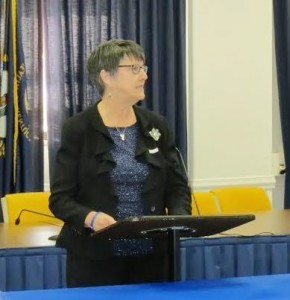 I am thankful and humbled to have been selected to attend Call to Congress. (This will be my first trip to D.C., so I am excited about that part too!)
I am thankful and humbled to have been selected to attend Call to Congress. (This will be my first trip to D.C., so I am excited about that part too!)
Who am I? Just a grandma who has lived with type 2 diabetes for 11 years. I was very ill when I was first diagnosed. However, with a complete lifestyle change and multiple DSME classes, I am doing better now than I was at age 50! I am soon to be 68.
My diabetes experience doesn’t end there. My mother had diabetes late in life, but she did not have to take medication. Her aunt also had diabetes, but she did not take care of herself and lived at a time when treatments were less advanced, and died young. I remember my great-aunt dining with us and overeating, then taking additional insulin to bring her blood glucose down. I was young, and it scared me. I think those memories helped me to take the disease very seriously—as we all should.
I’ll do anything I can to increase awareness of diabetes. I have spoken at the Diabetes Advocacy Day in my state capital of Frankfort, Kentucky. I am active in my community and with my local Association office. What first was considered a curse for me has now become my life passion. I am a community organizer for KIPDA (Kentuckiana Regional Planning & Development Agency) Rural Diabetes Grant, which is funded through the CDC. I lead our community diabetes coalition and the “Live Empowered!” program in local churches. I sign up for the local walks. I facilitate Stanford Diabetes Self-Management Classes. I also lead a support group based on the National Diabetes Education Program’s “New Beginnings,” which is for the person living with diabetes AND their family and friends. It really deals with the emotions and stress of diabetes, which are so important to address.
But Call to Congress—and the chance to speak with members of Congress and their staffs about this cause—may be my biggest moment yet in the fight to Stop Diabetes®.
Why am I a Diabetes Advocate? I want to help policymakers realize that diabetes is a serious disease that has reached epidemic levels. They need to understand how important education and resources are to the community, especially rural communities.
When I was diagnosed, we had nothing available in our county (Henry County, Kentucky). Fortunately, I understood the importance of learning about the disease. I had two friends who really encouraged me to learn more and get to know my body. However, I know from my work that many folks do not have that motivation, or that access to information. We need to empower people to believe that THEY are the most important person on their health care team.
My mantra has been:
Diabetes is a personal diagnosis,
Diabetes is a family diagnosis,
Diabetes is a community diagnosis,
And TOGETHER we can win the battle!
(And Congress, we need your help!)
Just because you’re not part of Call to Congress doesn’t mean you can’t help. Anyone who is affected by diabetes—and who isn’t? —can be an advocate. Please learn more and sign our petition to Congress at https://stopdiabetes.com/petition. Together, we can win this battle.
Okay, Capitol Hill, I’m coming for ya!
Mary Beth Lacy - Ambassador
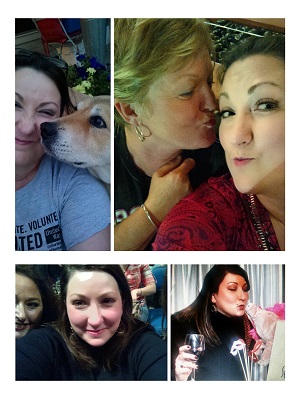 In 1976 it was rare to hear of a person living with diabetes in East Ky but when you did, it was always an older person in their late sixties or seventies. It was unheard of for a toddler to be so sick with this disease, and it was unthinkable and incomprehensible to hear that it was your child. Your baby. And yet, that is exactly what happened to the Lacy’s. At only three years old, after almost 8 months of a phantom illness making her sick and stealing her bright, happy personality, their youngest daughter Mary Beth was diagnosed with “Juvenile Diabetes” Faced with the daunting task of raising a child in East KY, far from Lexington, where the Pediatrician who specialized in Diabetes was based, a family came together to face the seemingly insurmountable challenges of a lifetime of Diabetes. Initially they were told that their daughter would not live to be a teenager but year after year she, and their other children continued to amaze them. Pulling together in a protective unit, big sister and a brother paved the way for Mary Beth to live a happy, regular life. Living in small community where gardens were large and hearts were even bigger was one of the greatest advantages they had, which they had been told would be one of the biggest obstacles. “I cannot remember a time when I felt that I wasn’t part of a community, I couldn’t eat what everyone else was eating but there was still plenty” says Mary Beth “I was fully aware of my diabetes, how could you not be when you got shots every day? But life was still full of bikes and tag and cheerleading and all the normal things you did as a kid and teenager.”
In 1976 it was rare to hear of a person living with diabetes in East Ky but when you did, it was always an older person in their late sixties or seventies. It was unheard of for a toddler to be so sick with this disease, and it was unthinkable and incomprehensible to hear that it was your child. Your baby. And yet, that is exactly what happened to the Lacy’s. At only three years old, after almost 8 months of a phantom illness making her sick and stealing her bright, happy personality, their youngest daughter Mary Beth was diagnosed with “Juvenile Diabetes” Faced with the daunting task of raising a child in East KY, far from Lexington, where the Pediatrician who specialized in Diabetes was based, a family came together to face the seemingly insurmountable challenges of a lifetime of Diabetes. Initially they were told that their daughter would not live to be a teenager but year after year she, and their other children continued to amaze them. Pulling together in a protective unit, big sister and a brother paved the way for Mary Beth to live a happy, regular life. Living in small community where gardens were large and hearts were even bigger was one of the greatest advantages they had, which they had been told would be one of the biggest obstacles. “I cannot remember a time when I felt that I wasn’t part of a community, I couldn’t eat what everyone else was eating but there was still plenty” says Mary Beth “I was fully aware of my diabetes, how could you not be when you got shots every day? But life was still full of bikes and tag and cheerleading and all the normal things you did as a kid and teenager.”
Diabetes was simply part of Mary Beth’s life and not something that she made a primary focus. Perhaps because she was so young when the disease entered her life, it was simply something she lived with. In college, “my time of stupidity” diabetes was almost completely forgotten and largely ignored. Something she feels passionately about now. In fact, she lives a life that is focused on Diabetes now. As a successful professional in the Health Care Industry, she is passionately committed to “making Kentucky the best state to live in if you live with Diabetes” and “Making Diabetes Famous” Mary Beth serves on the Board of Director of the KY Diabetes Network and Chairs the Community Outreach Group which is responsible for Diabetes Day at the Capitol, she is a Key Diabetes Advocate and Voice in KY as well as with the American Diabetes Association Call to Congress. As member of 6 Diabetes Coalitions in East Ky she strives to educate and empower those living with the disease inside them and those who live with it as caregivers. As Redstreak EKY on Instagram, Facebook and Twitter she shares what you can do in East KY if you live with Diabetes and takes personal pride in slaying stereotypes with every post! What does this 41 year old say to those doctors who told her parents she wouldn’t live to be older than 13? With a smile and an attitude she says “How do you like me now?”
Emilee Fairchild - Ambassador
 Emilee Fairchild is an 18 year old high school senior who was diagnosed with type 1 diabetes at age 7.While there are challenges to managing life with type 1 diabetes, especially during those formative teenage years, Emilee has thrived with perseverance, resilience, faith and determination. During the last 10.5 years, Emilee has served as a youth ambassador for JDRF, she represented Kentucky as Delegate during the 2007 JDRF Children’s Congress, and she mentors newly diagnosed. She is part of the planning committee that brought a successful walk to cure diabetes event to eastern Kentucky for the very first time, and two annual events in the years to follow. She attends and participates in the annual Children with Diabetes conference event each summer, and in summer 2015, she will become of a member of the staff, working with elementary aged children with type 1 diabetes attending the conference.
Emilee Fairchild is an 18 year old high school senior who was diagnosed with type 1 diabetes at age 7.While there are challenges to managing life with type 1 diabetes, especially during those formative teenage years, Emilee has thrived with perseverance, resilience, faith and determination. During the last 10.5 years, Emilee has served as a youth ambassador for JDRF, she represented Kentucky as Delegate during the 2007 JDRF Children’s Congress, and she mentors newly diagnosed. She is part of the planning committee that brought a successful walk to cure diabetes event to eastern Kentucky for the very first time, and two annual events in the years to follow. She attends and participates in the annual Children with Diabetes conference event each summer, and in summer 2015, she will become of a member of the staff, working with elementary aged children with type 1 diabetes attending the conference.
But the personal accomplishments Emilee has completed as someone with T1D are what reflect her determination to not allow T1D to define her or her life. Emilee played varsity softball and varsity soccer during her freshman year of college. She decided to focus solely on varsity soccer and was a starting player for the varsity soccer team for the rest of her high school sports career. Playing varsity soccer as a T1D poses complications – it is a high intensity, contact sport. Eighty minute soccer games often resulted in low blood glucose levels hours after the game, but Emilee was determined to not let that dissuade her. One night, moments before an important season game, Emilee’s blood glucose plummeted to 43 with 7 minutes before the game was to begin. Determined to not let T1D keep her on the sidelines, she and her mom treated the low with fast acting carbohydrates, suspended the insulin pump, and watched the clock. Just in time to take the field and start the game, her blood glucose had risen to a safe number of 117, she started the game with her teammates, and the game ended with a win!
The determination and passion to thrive despite diabetes has paid off. In December, Emilee accepted an invitation and athletic scholarship to play womens’ college soccer at the University of Pikeville where she will major in pre-med. It is certain there will be challenges ahead, and it certainly isn’t easy to manage a “normal” life with T1D, but with the right attitude, a little faith, and whole lot of support from family and friends, it is entirely possible!
